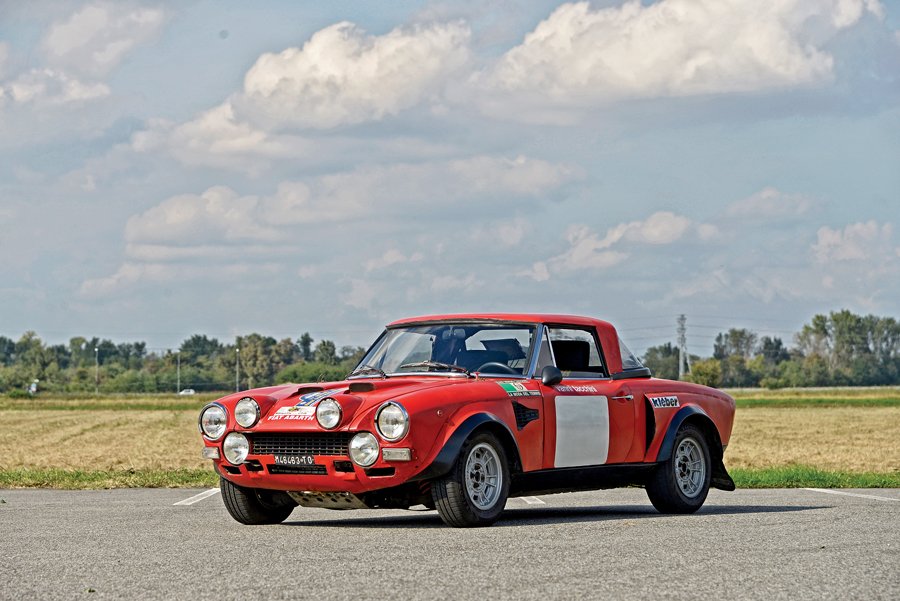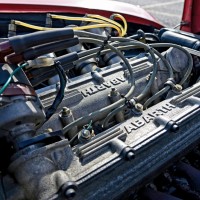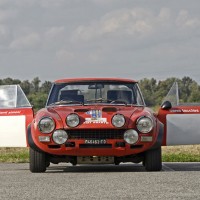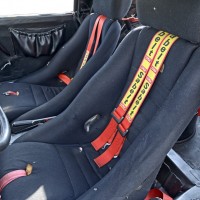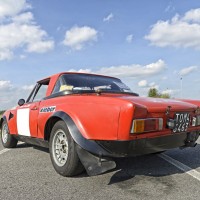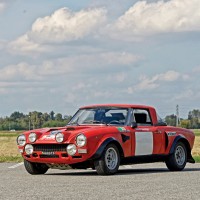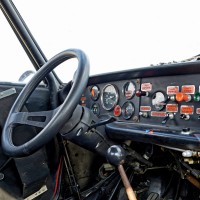SCM Analysis
Detailing
| Vehicle: | 1975 Fiat-Abarth 124 Sport Rally Group 4 Spider |
| Years Produced: | 1972–75 |
| Number Produced: | 1,000 |
| SCM Valuation: | Median to date, $84,004; high sale, $175,262 (subject car) |
| Club Info: | Sporting Fiats Club |
| Website: | http://www.sportingfiatsclub.com |
| Alternatives: | 1965–73 Lancia Fulvia Rallye, 1972–74 BMW 2002 tii, 1975–77 Ford Escort RS 1800 |
| Investment Grade: | A |
This car, Lot 358, sold for $175,262, including buyer’s premium, at Bonhams’ auction in Paris, France, on February 4, 2016.
Okay, let’s start with the obvious: You can go out today and buy a good Fiat 124 Spider for 10 grand, maybe 15 grand if you want a really nice one. For a little over 10 times that much, you could have bought today’s subject car, and it’s not even very shiny.
There is obviously a story here, and it has to do with history, performance and exclusivity. Even common-as-dirt cars can have very special variants.
A good place to start to understand this is to look at what Fiat was doing in the early 1970s. By this point, they were one of the largest car companies in Europe, owned Lancia completely and owned 50% of Ferrari.
Fiat concentrated on building for the bottom to middle of the market, Lancia was the upper side of things, and of course, Ferrari handled the ultimate performance market.
From a competition standpoint, Fiat divided up the responsibilities to limit the amount of direct competition between their various entities. Ferrari got World Championship sports cars and Formula One, and Lancia handled the professional rallying circuit. Fiat itself stayed in the game, but primarily sold rally cars to amateur competitors.
This is not to suggest that Fiat wasn’t serious about the rally cars it built — only that its badge stayed with variations on production cars while Lancia’s Stratos was conceived, designed and built strictly as a championship-level competition rally racer that happened to be street legal. (The Stratos was immensely successful, winning the World Rally Championship in 1974, 1975 and 1976.)
The Fiat 124 Sport Spider
Fiat’s 124 Sport Spider was introduced in 1966 on a shortened floor pan of the 124 sedan. It had a Tom Tjaarda-designed body, with a shape reminiscent of his Ferrari 275 GTS design, and a belt-driven, twin-cam variation of the pushrod 124 engine (the first belt-driven cam drive in production history), with an optional 5-speed transmission driving a live-axle rear. As such, it proved well suited to amateur rally use through the late 1960s.
Time and technology wait for no car, however, and by the early 1970s it was obvious that the 124 Spider was going to have to be upgraded to have any hope of staying competitive.
In 1972, Fiat introduced the Fiat-Abarth 124 Rally, technically named the 124 CSA (C-Spider–Abarth) as a homologation special.
The most obvious improvements were an independent rear suspension, disc brakes rather than drums on the back, fiberglass bonnet, boot and hard top along with aluminum doors and deleted bumpers to reduce weight — and an upgraded 1,800-cc engine.
The 5-speed was now standard, and the car came with a factory-installed four-point rollover bar and wider alloy wheels. The fiberglass body parts were painted flat black, so there was no mistaking it for an ordinary 124 Spider.
Like most homologation specials, it was limited production (1,000 built vs. about 200,000 total production) and available by special order only in Europe (it was not U.S.-legal) in only white, red or light blue.
The Rally Spider proved to be a very effective tool for the purpose, and won the 1972 European Championship, but horsepower soon proved to be a limitation.
Evolution into a screamer
Fortunately, FIA had relaxed the rules regarding engine-tuning options, so Fiat was able to keep up. By 1975, the ultimate iteration of the Sport Rally spider had evolved from the 2-valve, Weber-carbureted 128-hp engine of 1972 to the 4-valve, mechanically fuel-injected, roughly 170-hp screamer that is in our subject car.
I don’t know how many cars were built to this specification, but there weren’t many; it was basically just the factory team cars that went this far, as there was no claim to street usability. In 1975, Fiat won the European Championship with a sister car (a Lancia Stratos won the more-challenging World Championship), after which the 124 was retired in favor of the newer Fiat 131.
The only collectible Fiat 124s
Of all the various Fiat 124 cars built, the Rally Spiders are the only ones that are considered collectible. The old rule of “special then, special now” applies, as these cars were important in their time and remain distinctive, rare, fast — and an excellent weapon if you want to go play in European classic car rallying. American classic rallies are basically just tours — not competitive events — so a serious rally car would be wasted. Of these cars, the most exotic, rare and important are the late factory team cars like our subject.
On top of this is fortuitous history. The car rallied competitively, and then it was put away in air-conditioned storage for 30 years before it was carefully recommissioned and respectfully used.
As such, our subject car has the provenance and patina of a true survivor. It is not a restored or reconstructed imagining of the way something used to be. In my business, one of the basic mantras is “a car is only original once,” and a car that is both original and fully usable carries a serious premium over any lesser examples.
There is actually a great tradition of highly collectible racing variants of otherwise relatively ordinary cars. Austin Sebring Sprites, Mini Cooper S cars with serious history and Porsche factory team 911s are good examples.
Don’t think of this as a Fiat 124 Spider — think of it as a fire-breathing, factory-special Italian rally car and you won’t be far wrong. It sold for a fraction of the cost of a Lancia Stratos and isn’t out of line with any other top-line rally cars that it would have raced against.
I would say fairly bought. ♦
(Introductory description courtesy of Bonhams.)
